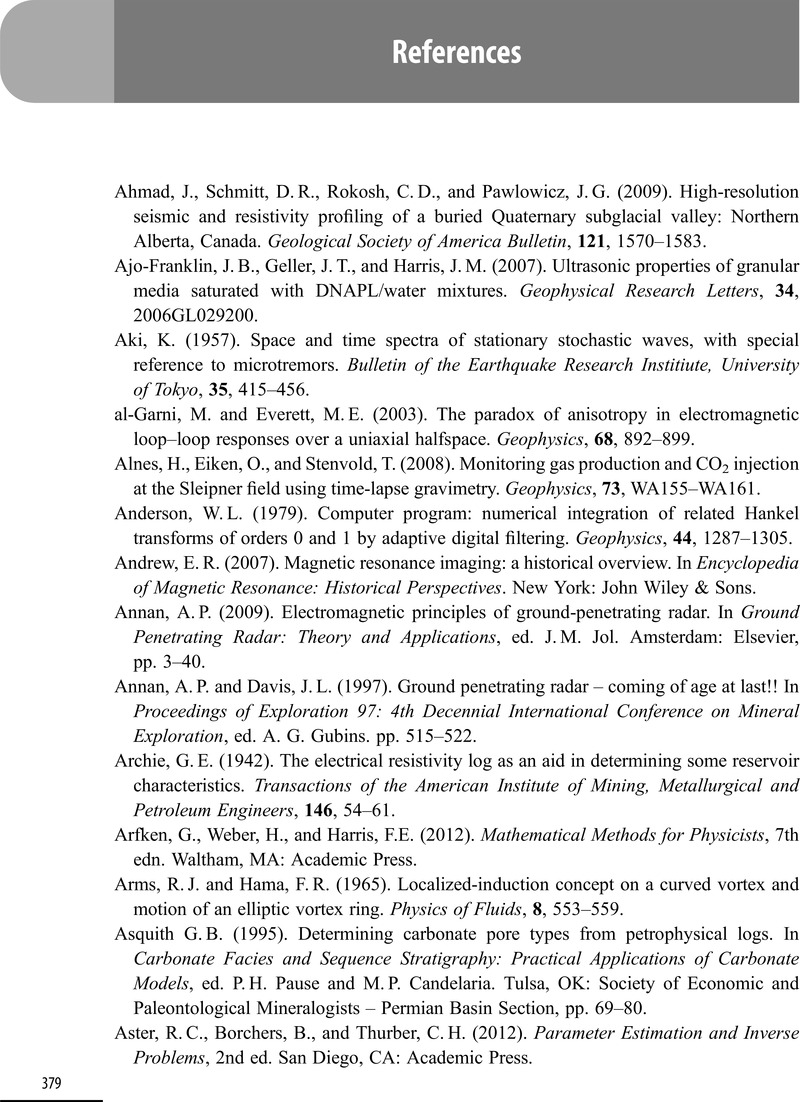Book contents
- Frontmatter
- Contents
- Preface
- Acknowledgments
- 1 Introduction
- 2 Data analysis
- 3 Magnetics
- 4 Electrical resistivity method
- 5 Induced polarization and self-potential
- 6 Seismic reflection and refraction
- 7 Seismic surface-wave analysis
- 8 Electromagnetic induction
- 9 Ground-penetrating radar
- 10 Emerging techniques
- 11 Linear inversion
- 12 Non-linear inversion: local methods
- 13 Non-linear inversion: global methods
- Appendix A Shannon sampling theorem
- Appendix B Solution of Laplace’s equation in spherical coordinates
- Appendix C The linear τ–p transformation of seismic data
- Appendix D Horizontal loop over a conducting halfspace
- Appendix E Radar TE waveguide mode equations
- References
- Index
- Plate section
- References
References
Published online by Cambridge University Press: 05 April 2013
- Frontmatter
- Contents
- Preface
- Acknowledgments
- 1 Introduction
- 2 Data analysis
- 3 Magnetics
- 4 Electrical resistivity method
- 5 Induced polarization and self-potential
- 6 Seismic reflection and refraction
- 7 Seismic surface-wave analysis
- 8 Electromagnetic induction
- 9 Ground-penetrating radar
- 10 Emerging techniques
- 11 Linear inversion
- 12 Non-linear inversion: local methods
- 13 Non-linear inversion: global methods
- Appendix A Shannon sampling theorem
- Appendix B Solution of Laplace’s equation in spherical coordinates
- Appendix C The linear τ–p transformation of seismic data
- Appendix D Horizontal loop over a conducting halfspace
- Appendix E Radar TE waveguide mode equations
- References
- Index
- Plate section
- References
Summary

- Type
- Chapter
- Information
- Near-Surface Applied Geophysics , pp. 379 - 399Publisher: Cambridge University PressPrint publication year: 2013

